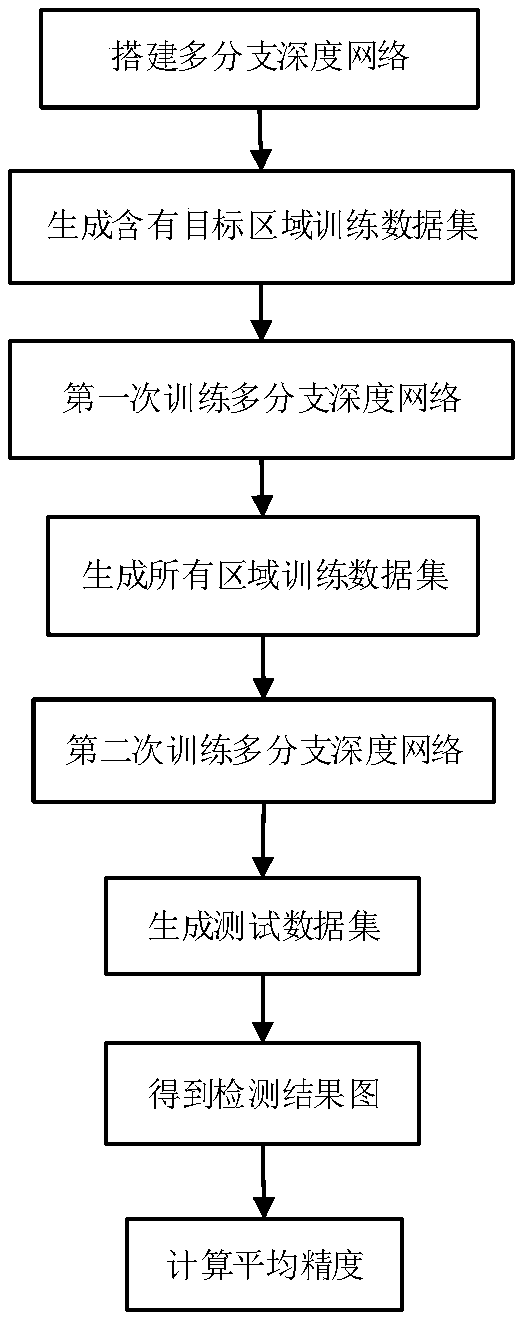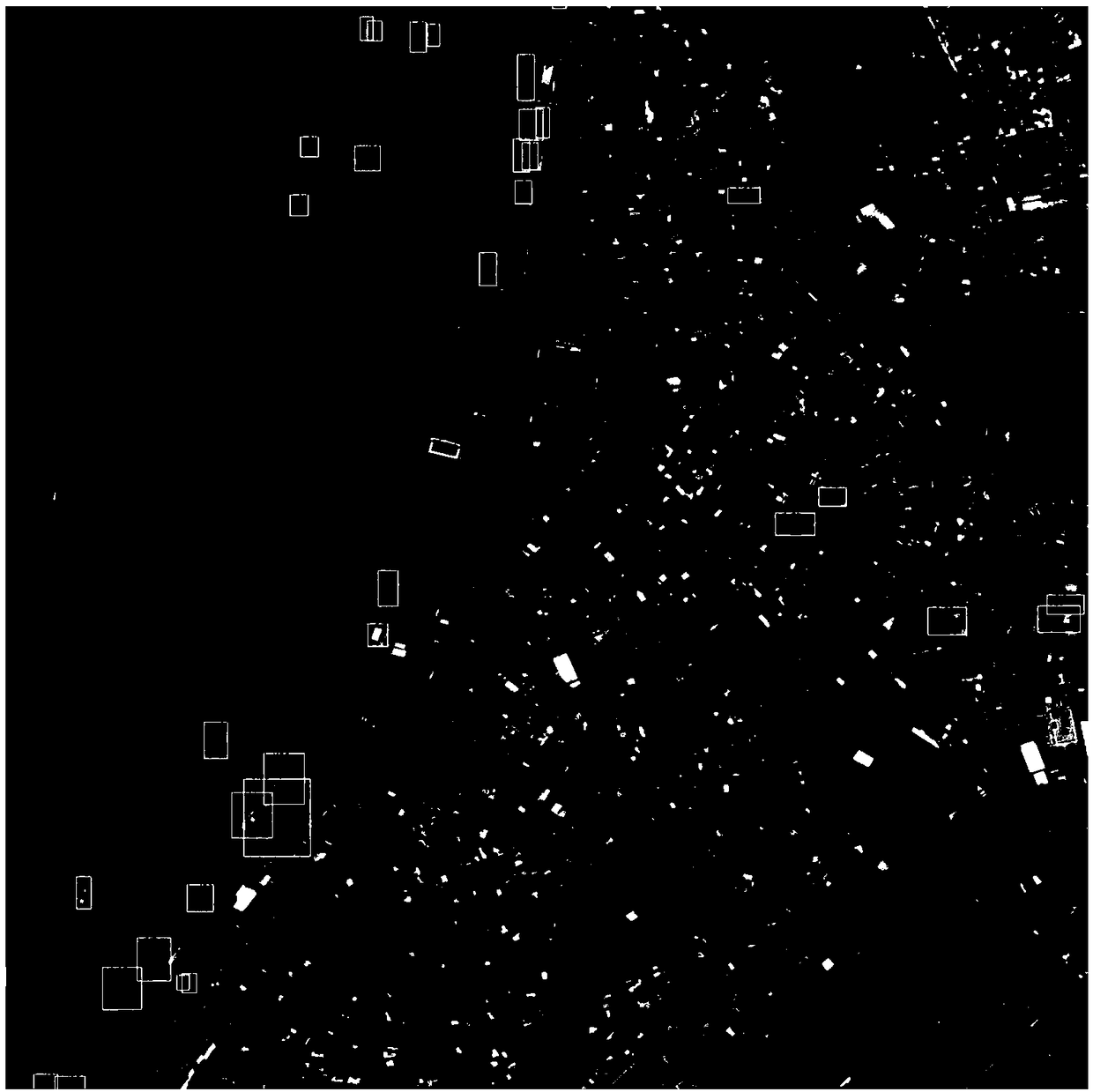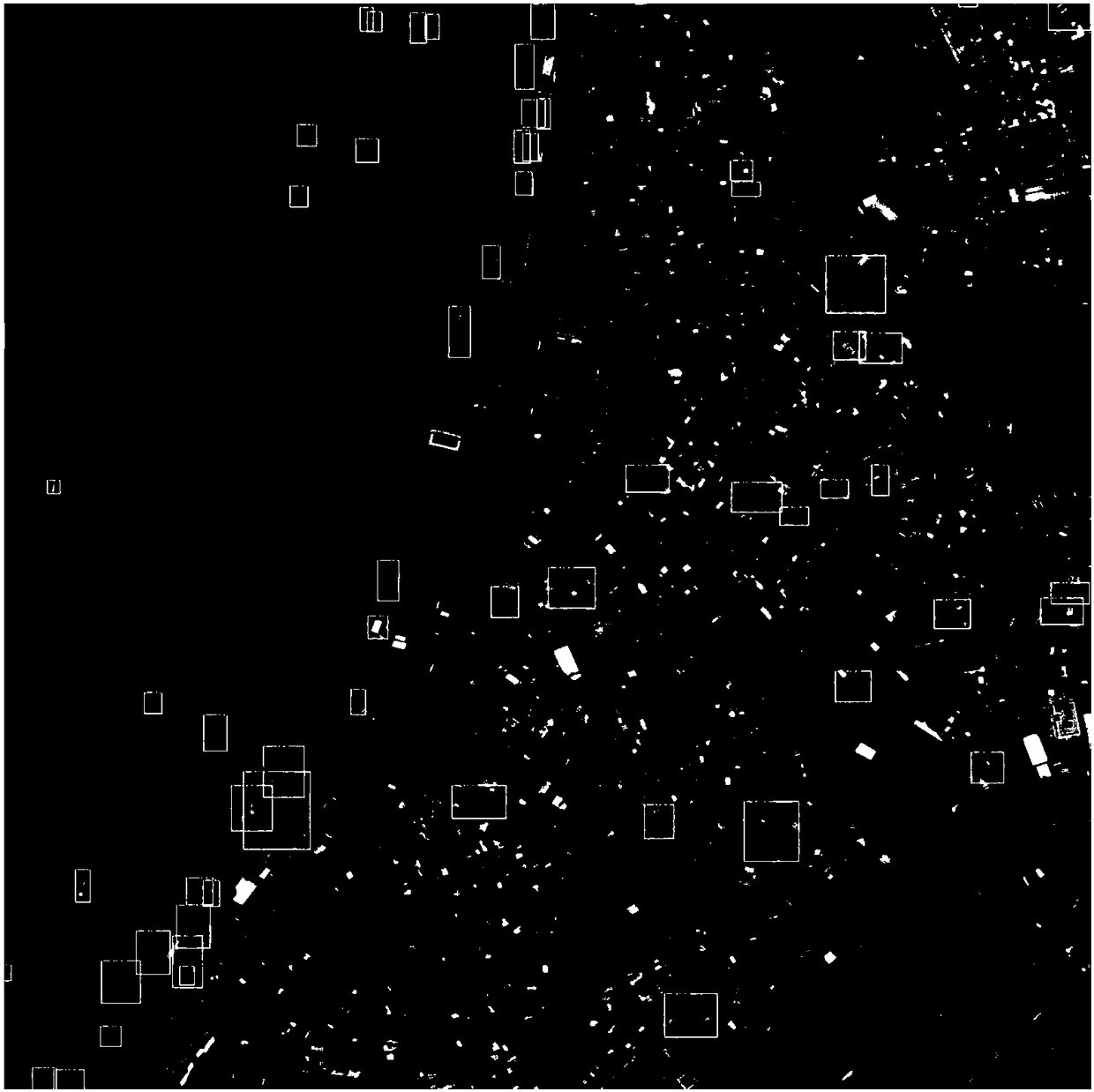Optical remote sensing image target detection method based on integrated deep convolutional network
An optical remote sensing image and depth convolution technology, which is applied in the field of optical remote sensing image target detection, can solve the problems of complex and cumbersome testing process, a lot of interference information, background false detection, etc. efficiency effect
- Summary
- Abstract
- Description
- Claims
- Application Information
AI Technical Summary
Problems solved by technology
Method used
Image
Examples
Embodiment Construction
[0038] The present invention will be described in further detail below in conjunction with the accompanying drawings.
[0039] Refer to attached figure 1 , the steps of the present invention are further described in detail.
[0040] Step 1. Build an integrated deep convolutional network.
[0041] Build an integrated deep convolutional network consisting of a base network, a region generation sub-network, and two classification sub-networks.
[0042] The described integrated deep convolutional network consisting of a basic network, a region generation subnetwork, and two classification subnetworks means that the region generation subnetwork and two classification subnetworks are arranged side by side, and each subnetwork is connected with the foundation network respectively. connect.
[0043] The basic network has 18 layers, and its structure is as follows: input layer → first convolutional layer → second convolutional layer → first pooling layer → third convolutional layer → ...
PUM
 Login to View More
Login to View More Abstract
Description
Claims
Application Information
 Login to View More
Login to View More - R&D
- Intellectual Property
- Life Sciences
- Materials
- Tech Scout
- Unparalleled Data Quality
- Higher Quality Content
- 60% Fewer Hallucinations
Browse by: Latest US Patents, China's latest patents, Technical Efficacy Thesaurus, Application Domain, Technology Topic, Popular Technical Reports.
© 2025 PatSnap. All rights reserved.Legal|Privacy policy|Modern Slavery Act Transparency Statement|Sitemap|About US| Contact US: help@patsnap.com



